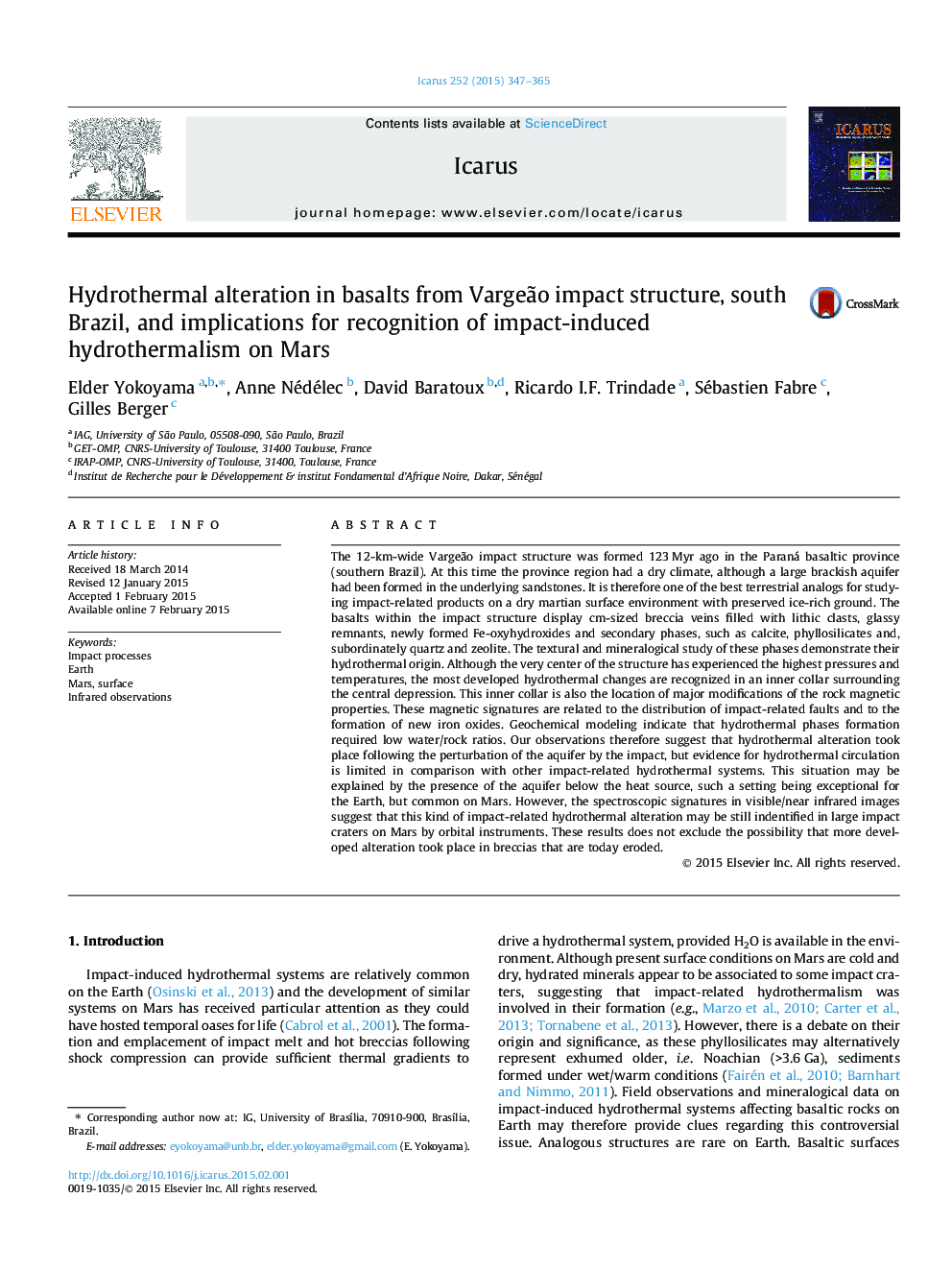| کد مقاله | کد نشریه | سال انتشار | مقاله انگلیسی | نسخه تمام متن |
|---|---|---|---|---|
| 8136592 | 1523538 | 2015 | 19 صفحه PDF | دانلود رایگان |
عنوان انگلیسی مقاله ISI
Hydrothermal alteration in basalts from Vargeão impact structure, south Brazil, and implications for recognition of impact-induced hydrothermalism on Mars
دانلود مقاله + سفارش ترجمه
دانلود مقاله ISI انگلیسی
رایگان برای ایرانیان
کلمات کلیدی
موضوعات مرتبط
مهندسی و علوم پایه
علوم زمین و سیارات
علوم فضا و نجوم
پیش نمایش صفحه اول مقاله

چکیده انگلیسی
The 12-km-wide Vargeão impact structure was formed 123 Myr ago in the Paraná basaltic province (southern Brazil). At this time the province region had a dry climate, although a large brackish aquifer had been formed in the underlying sandstones. It is therefore one of the best terrestrial analogs for studying impact-related products on a dry martian surface environment with preserved ice-rich ground. The basalts within the impact structure display cm-sized breccia veins filled with lithic clasts, glassy remnants, newly formed Fe-oxyhydroxides and secondary phases, such as calcite, phyllosilicates and, subordinately quartz and zeolite. The textural and mineralogical study of these phases demonstrate their hydrothermal origin. Although the very center of the structure has experienced the highest pressures and temperatures, the most developed hydrothermal changes are recognized in an inner collar surrounding the central depression. This inner collar is also the location of major modifications of the rock magnetic properties. These magnetic signatures are related to the distribution of impact-related faults and to the formation of new iron oxides. Geochemical modeling indicate that hydrothermal phases formation required low water/rock ratios. Our observations therefore suggest that hydrothermal alteration took place following the perturbation of the aquifer by the impact, but evidence for hydrothermal circulation is limited in comparison with other impact-related hydrothermal systems. This situation may be explained by the presence of the aquifer below the heat source, such a setting being exceptional for the Earth, but common on Mars. However, the spectroscopic signatures in visible/near infrared images suggest that this kind of impact-related hydrothermal alteration may be still indentified in large impact craters on Mars by orbital instruments. These results does not exclude the possibility that more developed alteration took place in breccias that are today eroded.
ناشر
Database: Elsevier - ScienceDirect (ساینس دایرکت)
Journal: Icarus - Volume 252, 15 May 2015, Pages 347-365
Journal: Icarus - Volume 252, 15 May 2015, Pages 347-365
نویسندگان
Elder Yokoyama, Anne Nédélec, David Baratoux, Ricardo I.F. Trindade, Sébastien Fabre, Gilles Berger,